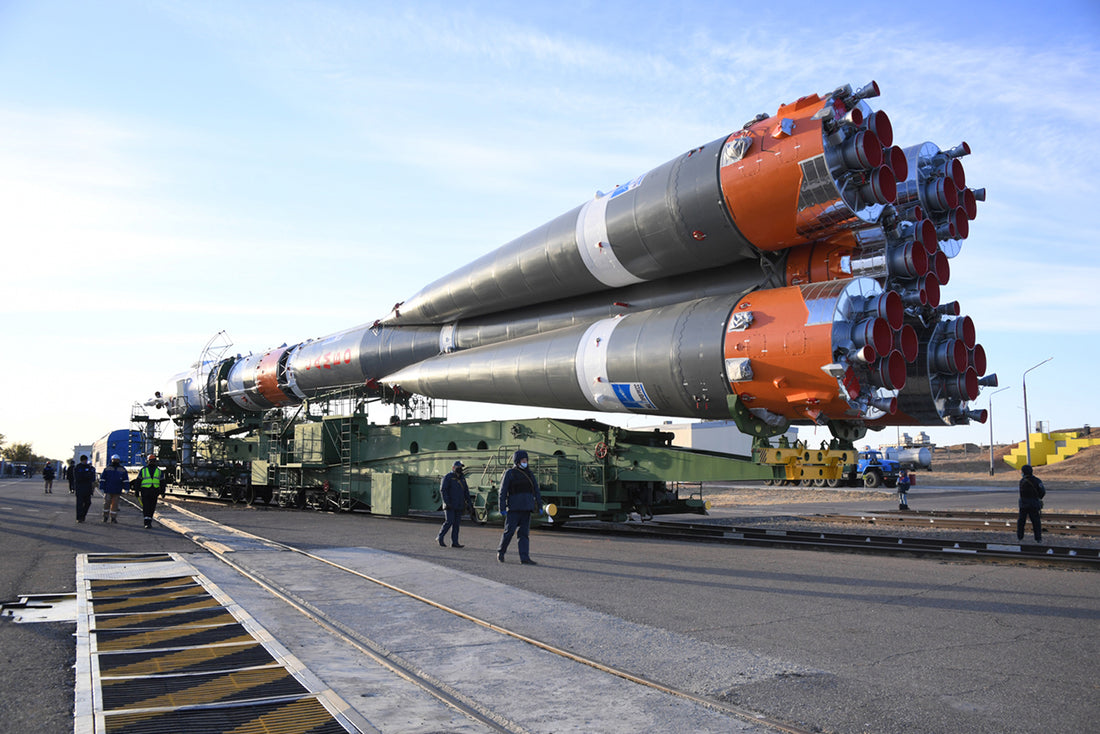
The Ruskis Sliced Docking Time With The ISS In Half. Here's How.
Share
The typical time for a Russian Soyuz craft (or any craft for that matter) to reach the International Space Station (ISS) is about 6 hours.
Even though rockets can boost us into space in under ten minutes, it takes us hours, or even days to dock with the ISS.
At 8:48 am GMT on October 14th, three crew members disembarked the craft after docking with the space station in just 3 hours and 3 minutes.
The launch from the Baikonur Cosmodrome in Kazakhstan decimated the previous typical time to reach the space station by around 50%.
How?
The rocket is the same, as always.
The launch location is nothing new, either.
The answer lies in the method to get the craft where it needs to be via the fastest possible route.
On a typical launch to the ISS, a Soyuz craft will complete four full orbits around Earth before rendezvousing with the ISS. Before this, both Soyuz and Progress missions historically took about 48 hours to make contact with the ISS.
This method forces the spacecraft to 'run down' the ISS like a police chase. It also made use of 34 total orbits of Earth.
Or as Jessica Orwig of Business Insider Australia put it: "imagine being chased by a 925,000-pound machine travelling at 17,500 miles per hour."
But in 2013, the fastest mission via the 'six-hour rendezvous' - or four-orbit method - set the benchmark. The self-explanatory approach was cutting edge at the time.
Now Soyuz MS-17 made it in just three hours. Meaning it is the first crewed craft of its type to complete the fastest "fast-track" method. The fastest "fast-track" method, or two orbits, is thankfully called the "ultrafast" method. We can only hope that as it becomes the norm, it is referred simply as "the way".
The Progress craft is almost identical to the Soyuz craft and the ultrafast - or two-orbit method - was tested five times for Progress resupply missions. The fastest Progress flight was Progress 70 and docked with the ISS in 3 hours and 48 minutes.
So how did the Soyuz craft shave a clean hour off the benchmark time?
Simple.
Instead of the police chasing the criminal car, you let the criminals come to you.
And at 27360km/h, the ISS is saving a lot of time and fuel by swinging by the Soyuz craft.
Let's break it down step-by-step thanks to YouTuber Smarter Every Day.
Step 1, or "insertion" is to make orbit by firing the rockets parallel to Earth.

Step 2 is to calibrate the orbit to approach the ISS's by completing the Hohmann Transfer, a way of configuring your position using measured rocket boosts. The perfect position should put the craft in orbit of Earth every 86 minutes, about 4 minutes in front than the ISS.
Note: this is a time interval, not a speed interval

The next step is a second Hohmann Transfer that puts the Soyuz in the exact orbit of the now pursuing ISS.

The final step is a nifty U-turn in orbit to meet the ISS face-to-face and a brief engine fire to slow down remove the time interval mentioned. The ISS is now travelling slightly faster and lets the slower Soyuz dock gently. 
Soothing, right?
The new crew - astronaut Kate Rubins and Russian cosmonauts Sergey Ryzhikov and Sergey Kud-Sverchkov - bring the total ISS population up to six. They join NASA astronaut Chris Cassidy and Roscosmos cosmonauts Anatoly Ivanishin and Ivan Vagner and will spend the next six months on the orbiting lab.
#Space_Aus




